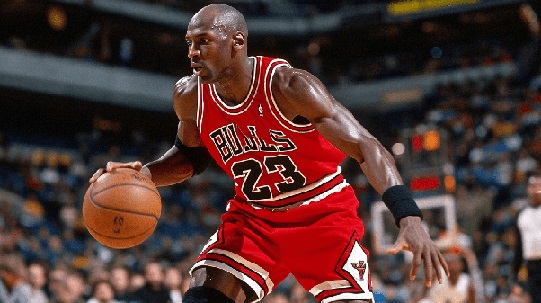
Michael Jordan, often regarded as the greatest basketball player of all time, has a retirement story that is as intriguing and complex as his illustrious career. His journey in the NBA is marked by multiple retirements and comebacks, each with its unique circumstances and impact on the world of sports. In this comprehensive article, we will delve deep into the details of when and why Michael Jordan retired from basketball, highlighting the key moments that defined his legendary career.
Michael Jordan’s First Retirement (1993)
The Decision to Step Away
On October 6, 1993, Michael Jordan shocked the world by announcing his first retirement from professional basketball. At the height of his career, having just led the Chicago Bulls to three consecutive NBA championships (1991, 1992, and 1993), Jordan cited a loss of desire to play the game as his primary reason for stepping away. This decision came shortly after the tragic murder of his father, James Jordan, in July 1993, which profoundly affected him.
Pursuing a Baseball Career
In a surprising move, Michael Jordan decided to pursue a career in professional baseball, a sport that his father had always envisioned him playing. He signed a minor league contract with the Chicago White Sox and was assigned to the Birmingham Barons, the team’s Double-A affiliate. Although his baseball career did not achieve the same level of success as his basketball endeavours, Jordan’s commitment and determination were evident.
Michael Jordan’s Return to Basketball (1995)
The Comeback Announcement
On March 18, 1995, Michael Jordan announced his return to the NBA with a simple yet powerful statement: “I’m back.” His comeback was highly anticipated and generated immense excitement among basketball fans. Jordan rejoined the Chicago Bulls and made his return to the court the following day against the Indiana Pacers.
Impact on the Bulls and the NBA
Jordan’s return revitalized the Chicago Bulls, who had struggled in his absence. Although the Bulls were eliminated in the Eastern Conference Semifinals by the Orlando Magic in the 1994-1995 season, Jordan’s presence was a game-changer. The following season, Jordan led the Bulls to an NBA-record 72-10 regular-season record and another NBA championship, cementing his legacy as one of the greatest athletes of all time.
Michael Jordan’s Second Retirement (1999)

The End of an Era
After leading the Chicago Bulls to a second three-peat (1996, 1997, and 1998), Michael Jordan announced his second retirement on January 13, 1999. This decision came after a lockout-shortened NBA season and the departure of key figures from the Bulls organization, including head coach Phil Jackson and teammates Scottie Pippen and Dennis Rodman.
Life Beyond Basketball
During his second retirement, Michael Jordan focused on his role as part-owner and President of Basketball Operations for the Washington Wizards. He remained involved in the NBA, contributing to the team’s management and decision-making processes.
Michael Jordan’s Final Comeback (2001)
A Surprising Return
In a move that surprised many, Michael Jordan announced his return to the NBA on September 25, 2001, this time as a player for the Washington Wizards. At the age of 38, Jordan aimed to bring his veteran leadership and experience to a young Wizards team.
Legacy and Final Seasons
Jordan played two seasons with the Washington Wizards, showcasing glimpses of his former brilliance despite battling injuries and the natural decline that comes with age. He retired for the final time on April 16, 2003, leaving behind an indelible mark on the game of basketball.
The Impact of Michael Jordan’s Retirements

Cultural and Economic Influence
Michael Jordan’s retirements and comebacks had a profound impact on the NBA and the sports world at large. His first retirement in 1993 sent shockwaves through the league, leading to a temporary decline in viewership and merchandise sales. Conversely, his return in 1995 sparked a resurgence in NBA popularity and revenue.
Inspiration and Legacy
Jordan’s journey is a testament to resilience, adaptability, and passion for the game. His multiple retirements and comebacks inspired countless athletes and fans, demonstrating that true greatness transcends the boundaries of the sport itself.
Conclusion
Michael Jordan’s career is a tapestry woven with moments of triumph, tragedy, and unparalleled excellence. His retirements from basketball were pivotal events that shaped the landscape of the NBA and left an enduring legacy. Understanding the chronology and significance of these retirements provides a deeper appreciation for the impact Jordan had on the sport and the world beyond.
Read More: When Michael Jordan walked away from basketball in 1993, the recoil was seismic

